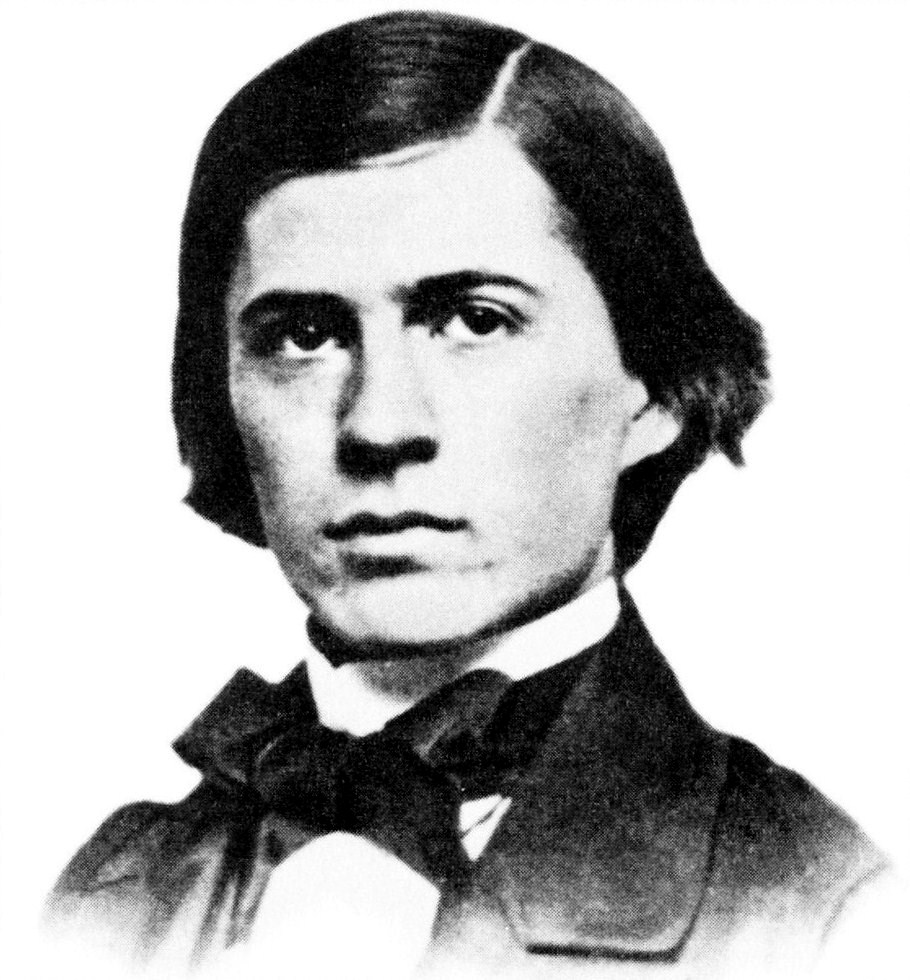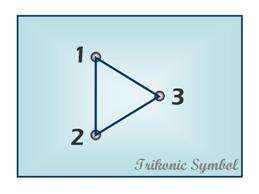|
Categories (Peirce)
On May 14, 1867, the 27–year-old Charles Sanders Peirce, who eventually founded pragmatism, presented a paper entitled " On a New List of Categories" to the American Academy of Arts and Sciences. Among other things, this paper outlined a theory of predication involving three universal categories that Peirce continued to apply in philosophy and elsewhere for the rest of his life. Burch, Robert W. (2001, 2010),Charles Sanders Peirce, ''Stanford Encyclopedia of Philosophy''. See §9 "Triadism and the Universal Categories".Bergman, Michael K. (2018), A Knowledge Representation Practionary: Guidelines Based on Charles Sanders Peirce', Springer Nature Switzerland AG, Cham, Switzerland. See Table 6.2 for about 60 examples throughout Peirce's career. The categories demonstrate and concentrate the pattern seen in " How to Make Our Ideas Clear" (1878, the foundational paper for pragmatism), and other three-way distinctions in Peirce's work. The Categories In Aristotle's logic, categories ... [...More Info...] [...Related Items...] OR: [Wikipedia] [Google] [Baidu] |
Charles Sanders Peirce
Charles Sanders Peirce ( ; September 10, 1839 – April 19, 1914) was an American scientist, mathematician, logician, and philosopher who is sometimes known as "the father of pragmatism". According to philosopher Paul Weiss (philosopher), Paul Weiss, Peirce was "the most original and versatile of America's philosophers and America's greatest logician". Bertrand Russell wrote "he was one of the most original minds of the later nineteenth century and certainly the greatest American thinker ever". Educated as a chemist and employed as a scientist for thirty years, Peirce meanwhile made major contributions to logic, such as theories of Algebraic logic, relations and Quantifier (logic), quantification. Clarence Irving Lewis, C. I. Lewis wrote, "The contributions of C. S. Peirce to symbolic logic are more numerous and varied than those of any other writer—at least in the nineteenth century." For Peirce, logic also encompassed much of what is now called epistemology and the philoso ... [...More Info...] [...Related Items...] OR: [Wikipedia] [Google] [Baidu] |
Arity
In logic, mathematics, and computer science, arity () is the number of arguments or operands taken by a function, operation or relation. In mathematics, arity may also be called rank, but this word can have many other meanings. In logic and philosophy, arity may also be called adicity and degree. In linguistics, it is usually named valency. Examples In general, functions or operators with a given arity follow the naming conventions of ''n''-based numeral systems, such as binary and hexadecimal. A Latin prefix is combined with the -ary suffix. For example: * A nullary function takes no arguments. ** Example: f()=2 * A unary function takes one argument. ** Example: f(x)=2x * A binary function takes two arguments. ** Example: f(x,y)=2xy * A ternary function takes three arguments. ** Example: f(x,y,z)=2xyz * An ''n''-ary function takes ''n'' arguments. ** Example: f(x_1, x_2, \ldots, x_n)=2\prod_^n x_i Nullary A constant can be treated as the output of an operation o ... [...More Info...] [...Related Items...] OR: [Wikipedia] [Google] [Baidu] |
Philosophical Logic
Understood in a narrow sense, philosophical logic is the area of logic that studies the application of logical methods to philosophical problems, often in the form of extended logical systems like modal logic. Some theorists conceive philosophical logic in a wider sense as the study of the scope and nature of logic in general. In this sense, philosophical logic can be seen as identical to the philosophy of logic, which includes additional topics like how to define logic or a discussion of the fundamental concepts of logic. The current article treats philosophical logic in the narrow sense, in which it forms one field of inquiry within the philosophy of logic. An important issue for philosophical logic is the question of how to classify the great variety of non-classical logical systems, many of which are of rather recent origin. One form of classification often found in the literature is to distinguish between extended logics and deviant logics. Logic itself can be defined as t ... [...More Info...] [...Related Items...] OR: [Wikipedia] [Google] [Baidu] |
University Of Gießen
University of Giessen, official name Justus Liebig University Giessen (), is a large public research university in Giessen, Hesse, Germany. It is one of the oldest institutions of higher education in the German-speaking world. It is named after its most famous faculty member, Justus von Liebig, the founder of modern agricultural chemistry and inventor of artificial fertiliser. It covers the areas of arts/humanities, business, dentistry, economics, law, medicine, science, social sciences and veterinary medicine. Its university hospital, which has two sites, Giessen and Marburg (the latter of which is the teaching hospital of the University of Marburg), is the only private university hospital in Germany. History The University of Giessen is among the oldest institutions of higher educations in the German-speaking world. It was founded in 1607 as a Lutheran university in the city of Giessen in Hesse-Darmstadt because the all-Hessian ''Landesuniversität'' (the nearby University o ... [...More Info...] [...Related Items...] OR: [Wikipedia] [Google] [Baidu] |
Universidade Estadual De Campinas
The University of Campinas (), commonly called Unicamp, is a public research university in the state of São Paulo (state), São Paulo, Brazil. Established in 1962, Unicamp was designed from scratch as an integrated Research institute, research center unlike other top Brazilian universities, usually created by the consolidation of previously existing schools and institutes. Its research focus reflects on almost half of its students being Postgraduate education, graduate students, the largest proportion across all large universities in Brazil, and also in the large number of graduate programs it offers: 153 compared to 70 undergraduate programs. It also offers several Continuing education, non-degree granting open-enrollment courses to around 8,000 students through its extension school. Its main campus occupies located in the district of Barão Geraldo, a suburban area from the downtown center of Campinas, built shortly after the creation of the university. It also has satelli ... [...More Info...] [...Related Items...] OR: [Wikipedia] [Google] [Baidu] |
Charles Sanders Peirce Bibliography
This Charles Sanders Peirce bibliography consolidates numerous references to the writings of Charles Sanders Peirce, including letters, manuscripts, publications, and . For an extensive chronological list of Peirce's works (titled in English), see the (Chronological Overview) on the (Writings) page for Charles Sanders Peirce. Abbreviations Click on abbreviation in order to jump down this page to the relevant edition information. Click on the abbreviation appearing with that edition information in order to return here. Main editions (posthumous) Other Primary literature Bibliographies and microfilms Other bibliographies of primary literature * Burks, Arthur W. (1958). "Bibliography of the Works of Charles Sanders Peirce." CP 8:260–321. * Cohen, Morris R. (1916). "Charles S. Peirce and a Tentative Bibliography of His Published Writings." '' The Journal of Philosophy, Psychology, and Scientific Methods'' 13(26):726–37. *Fisch, Max H. (1964). "A First Supplement ... [...More Info...] [...Related Items...] OR: [Wikipedia] [Google] [Baidu] |
Kibibyte
The byte is a unit of digital information that most commonly consists of eight bits. Historically, the byte was the number of bits used to encode a single character of text in a computer and for this reason it is the smallest addressable unit of memory in many computer architectures. To disambiguate arbitrarily sized bytes from the common 8-bit definition, network protocol documents such as the Internet Protocol () refer to an 8-bit byte as an octet. Those bits in an octet are usually counted with numbering from 0 to 7 or 7 to 0 depending on the bit endianness. The size of the byte has historically been hardware-dependent and no definitive standards existed that mandated the size. Sizes from 1 to 48 bits have been used. The six-bit character code was an often-used implementation in early encoding systems, and computers using six-bit and nine-bit bytes were common in the 1960s. These systems often had memory words of 12, 18, 24, 30, 36, 48, or 60 bits, corresponding to ... [...More Info...] [...Related Items...] OR: [Wikipedia] [Google] [Baidu] |
Trikonic
Trikonic, is a proposed method of philosophical analysis-synthesis. It is based on Charles Sanders Peirce's "trichotomic", which he described in 1888 as "the art of making three-fold divisions". Trikonic, or "diagrammatic trichotomic", was developed by Gary Richmond in 2005. Peircean Category Theory A major part of trikonic analysis is the three Peircean categories; these consist of firstness, secondness and thirdness: * ''"Firstness is the mode of being that of which is such as it is, positively and without reference to anything else.'' * ''Secondness is the mode of being that which is such as it is, with respect to a second but regardless of any third.'' * ''Thirdness is the mode of being that which is such as it is, in bringing a second and third into relation to each other."'' Another way of describing the basic understanding of these notions is from Sowa: :''“First is the conception of being or existing independent of anything else. Second is the conception of being r ... [...More Info...] [...Related Items...] OR: [Wikipedia] [Google] [Baidu] |
On A New List Of Categories
Charles Sanders Peirce ( ; September 10, 1839 – April 19, 1914) was an American scientist, mathematician, logician, and philosopher who is sometimes known as "the father of pragmatism". According to philosopher Paul Weiss, Peirce was "the most original and versatile of America's philosophers and America's greatest logician". Bertrand Russell wrote "he was one of the most original minds of the later nineteenth century and certainly the greatest American thinker ever". Educated as a chemist and employed as a scientist for thirty years, Peirce meanwhile made major contributions to logic, such as theories of relations and quantification. C. I. Lewis wrote, "The contributions of C. S. Peirce to symbolic logic are more numerous and varied than those of any other writer—at least in the nineteenth century." For Peirce, logic also encompassed much of what is now called epistemology and the philosophy of science. He saw logic as the formal branch of semiotics or study of signs, o ... [...More Info...] [...Related Items...] OR: [Wikipedia] [Google] [Baidu] |
Joseph Morton Ransdell
Joseph Morton Ransdell (1931–2010) was an associate professor of philosophy from 1974 to 2000 at Texas Tech University in Lubbock, Texas. A native of Oklahoma City, Oklahoma, Ransdell in 1961 received his Bachelor of Arts degree in philosophy from San Francisco State University in San Francisco, California. He subsequently obtained his Ph.D. in philosophy from Columbia University in New York City, where he wrote his dissertation on Peirce. Before coming to Texas Tech, Ransdell taught philosophy at the University of California, Santa Barbara in Santa Barbara and then spent a year in San Luis Potosí, Mexico, to write his book ''Pursuit of Wisdom.'' He wrote chiefly about Charles Sanders Peirce and his theory of representation. He was also interested in Socrates and the Socratic Plato Plato ( ; Greek language, Greek: , ; born BC, died 348/347 BC) was an ancient Greek philosopher of the Classical Greece, Classical period who is considered a foundational thinker ... [...More Info...] [...Related Items...] OR: [Wikipedia] [Google] [Baidu] |


